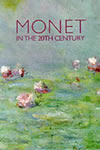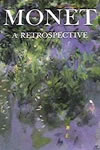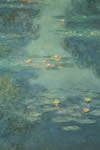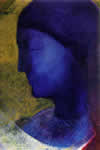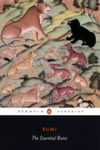Virtuosity is achieved by people of every type. The great Renaissance sculptor Benvenuto Cellini boasted that he had committed murder. Caravaggio — the most influential painter of his age — fled Italy after killing two men in duels. Michelangelo was obsessed with his own genius. Newton was so harmed by his ego that he deliberately savaged the reputations of his brilliant rivals, Liebnitz and Hooke. Bitterness and bullying contempt have been a hallmark for many great minds.
In the sciences, perhaps such egotism needs no explanation: the sciences are not concerned with the expression of humanity, after all. But so many artists have expressed virtuosity without any apparent compassion. As humans, we are divided between collaboration and competition. The Renaissance flourished in the flowing tides of plague and warfare, and in a group of states held by petty dynasties, all eager to grab the papacy and bring the one true religion into their service. The famous six popes were greedy, rapacious men. Julius II, who commissioned the Sistine Chapel murals, was the first pope to lead his own troops into battle. Alessandro Borgia fathered the princeling Cesare, and with his poisoner daughter, Lucrezia, watched prostitutes picking up chestnuts from the floor of the Vatican palace in a most immodest way. Art is tangled with malice, with pomp and with the most hideous self-glorifying vices.
We know that many of the great French artists and authors patronised the maison close, the legal brothels, and drank absinthe excessively. Syphilis was a common cause of death. Toulouse-Lautrec took up residence in a bordello, because he found the prostitutes more human, and produced an art redolent of reality, in a time of swirling, whipped-cream pretence. But we also know that Picasso and Cezanne were hard, angry men full of jealousy.
The time comes to ask what art itself expresses. There is no point in trying to say what it should express, because it should express the full range of human possibilities. After Victorian repression came the adolescent insistence on making a spectacle of everything that had been private. Art focused on smut, scatology and the essence of disgust. But anyone familiar with the centuries leading up to the Victorian pretence knows that these elements have always been present - see Rembrandt’s etchings for a full view by a master, or look to Goya. Freud caught the next tide, and scared himself at where he washed up.
But what does the artist seek in expressing art? The twentieth century became obsessed with psychotherapy, and art became a sort of exorcism. Great strings of hideous thoughts were to be pulled into the light from an unconscious that once stimulated is endlessly productive. The naïve sentimentality of the Pre-Raphaelites and their consumptive spirituality were to be flushed away with this ceaseless sewerage.
And art that expresses disgust is absolutely valid. But what does the artist strive for? Having expressed disdain, and journeyed beyond the end of monotony, what remains? What if the experience of the artist is joyful? Perversely, there is very little western art that fits this category. It can be found in religious music, and the occasional Madonna. Oddly, Faure’s Requiem, the most beloved mass of the twentieth century, was the work of an atheist. So, belief is not necessary to set in train the striving for a higher expression. Nor is it necessary to cultivate brittle optimism, because nothing brittle has strength enough to achieve the heights.
When we look to literature, we can find beautiful language allied to profound meaning in the King James Bible. No faith in God is needed to exult in the words of the Sermon on the Mount. Without intended irony, the sentiments expressed soundly criticise the establishments that claim to espouse those very sentiments. The words are truly thrilling. Similar darts of resonance can be found in many of the mystics.
Michelangelo depicted a writhing mass of muscular bodies. He glorified man — and himself most of all. The triumph of his genius is breath-taking, but in spite of the adventurous nudity of his figures, there is little to aspire to in the hideous stories they enact. Here is a God of vengeance, piqued by a misdemeanour that His omniscience must already have encompassed, piqued into punishing every generation for the most simple of sins. What is it that Michelangelo wants to share with us?
There is an art of tranquility. Of the human spirit, of the spirit of humanity. It can be seen in the last works of that cranky old man Claude Monet, who somehow transformed his own aching antiquity into pure joy. It can be seen in the quiet probing of Odilon Redon, or in the confident humility of Jalaladin Rumi. The greatest art has considered the lilies of the field, and sees our place among them. It gives us hope to try and add our simple bloom to theirs.
March 2005
